
views
Creating a Treasure Hunt

Choose your theme. Themes make your treasure hunt fun especially if you choose a theme based on the interests of those participating. For example, if your son likes pirates, you can make a pirate treasure hunt for him and his classmates. Other possible themes are: Disney princesses, dinosaurs, ancient Egypt, jungle, Indiana Jones, carnival, camping, fairies, mystery, current events, tv shows, videogames, etc.
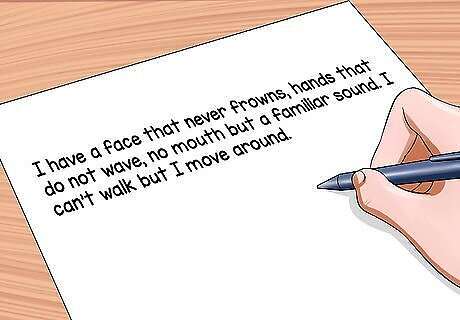
Plan your clues. Find clues online or brainstorm clues based on how old and savvy the players are. The players need the clues to get from one spot to the next. Riddles are great for older players who need more challenging clues. In contrast, younger players may enjoy fun clues like rhymes. If there are very young players, you can just use pictures as clues. Choose the number of clues according to how much time you have and how many players are participating. Try to make the clues stick to the theme of your treasure hunt. If you are making a dinosaur treasure hunt, relate each clue to a different dinosaur. An example of a riddle is, “I have a face that never frowns, hands that do not wave, no mouth but a familiar sound. I can’t walk but I move around.” An example of clue sequence would be: Clue #1: When your hunger strikes your mood, it leads you here to get some food. (Place Clue #2 in the pantry.) Clue #2: Hooray, you’ve made it to number two. To get to number three, put these on before your shoe. (Place Clue #3 in the sock drawer.)
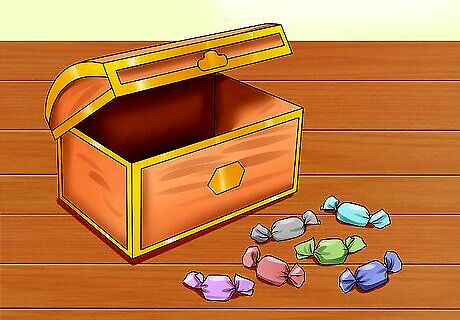
Plan your treasure. Choose a variety of prizes that relate to the theme of your treasure hunt. There may be players with food allergies so be sure to ask if you’re including snacks or treats. Plan the treasure in private so no players can cheat. You may use an old container, decorate it, and fill it with toys and treats from the dollar store. Prizes can include candy, pencils, toys, coins, light-up necklaces, glow sticks, sports tickets, or more lavish prizes like a vacation . If you design your own box, you can ask other players to help you decorate it. You may also skip using a single treasure chest and use individual prize bags. For a no-frills approach, simply decorate brown paper bags and fill each with prizes.

Hide your clues. Make sure that the players cannot see you as you place the clues around the house, office, or outside if weather permits. Make sure you keep the clues accessible if you have small children playing. Place the clues far apart and in locations that aren’t similar. You don’t want a player finding the wrong clue. You can get the kids to eat a snack or plant the clues while the kids are at school. Make sure that they are always supervised so you don’t risk having someone wander over to sneak a peek at you while you are hiding the clues.

Send them on their treasure hunt. Gather the players and explain the rules. Make sure they know what’s out of bounds. You don’t want them wandering into a dangerous room or a restricted area, like outside, if they aren’t allowed. Split a larger group into teams and make sure there’s an equal amount of skill in each team. For example, avoid placing all the fast kids or good readers in one team. Get the players to be in costume if you are doing a themed treasure hunt. Make sure each player gets a chance to read a clue out loud. Also, ensure that everyone is participating and that brainstorming is fun and no one is being picked on. Don’t let a single person dictate all the answers and directions. Make sure each team works together and cooperates. Cheer them on and don’t give away answers.
Creating Different Types of Treasure Hunts
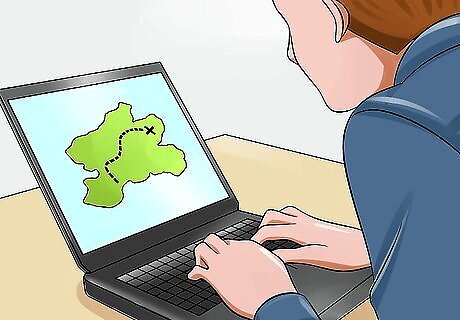
Find ideas online if the brainstorming of your group won’t suffice. There are many different treasure hunts online. If you feel stuck, don’t know where to start, or the ideas you have are too complicated for your resources, check online for what may suit the players involved. You may also start with their interests, like robots, and search for treasure hunts that will appeal to them.
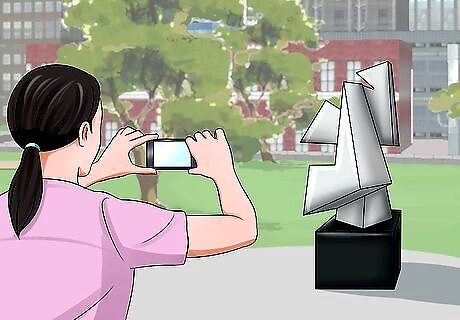
Create a photo hunt. Get players or teams to use cameras or their phones to find different things by taking photos of them. Create a list for everyone to follow and look through the list together. The first team with all the photos wins. For example, you could ask different departments from your office to scour the city for landmarks or have a class of second graders take pictures of certain furniture or shapes around the house. You may also choose activities, like forming a human pyramid, to take a picture of. You may make harder to get photos worth more points and make sure to give a time limit. The team with the most points at the end of the given time wins.
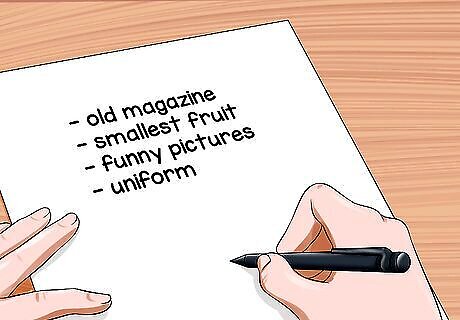
Create a scavenger hunt. Create a list of fun and hard-to-find items. Make sure you set boundaries of where players or teams are allowed to search. Give copies of the list to everyone playing. Make sure that it’s against the rules to steal and give a time limit to find everything. First team to find everything on the list wins. A list can include an old magazine, the smallest or largest fruit in the house, funny pictures, a person wearing a certain uniform (firefighter for example), or whatever else suits the age and skill of the players.
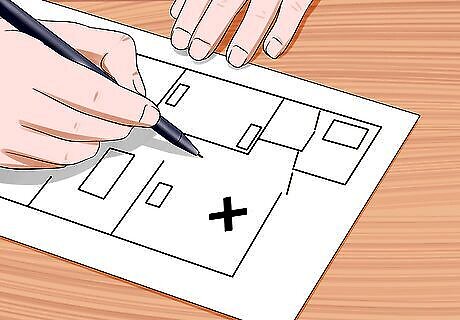
Begin a map hunt. Create a map of your home, your backyard, or your neighbourhood. Make sure the playing area is suitable for the age and skill of your players. Place an X for each location of a clue. You may also just use an X to mark the location of the first clue which will lead them to the next clue until they have found the treasure. For example, the first clue may be something similar to, “walk 40 paces to the east and turn to your left and walk two paces. Climb the big log and look under the green statue for clue number two. You may also find useful maps online that can be applied to your classroom or home.

Appeal to the imagination of little kids. Create a treasure hunt for younger kids by using their imagination along with big and bold images. Be a good storyteller to get them to each clue. You may also have a prize at each clue or, for a larger group, have them return to a central location after they find each clue to claim their prize. You may create two sets of clues for each team or sets of clues for each player if the group is small. This way the kids can exchange stories about what they find after the game. Make sure that everyone gets to partake in finding the treasure. Very small kids will easily become jealous or feel left out so have them be involved in finding some part of the treasure.




















Comments
0 comment